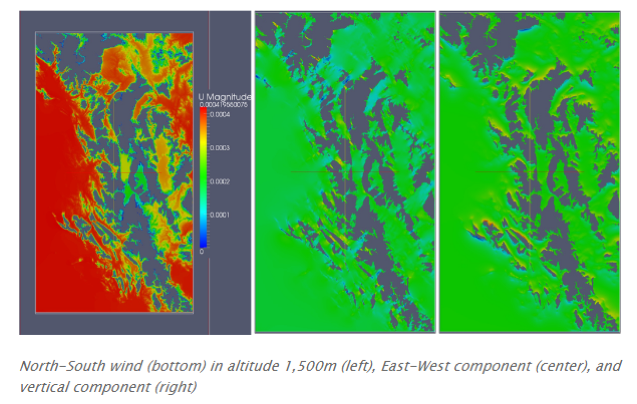Wind simulation over mountainous regions is of great interest for planning of human activities, in particular for green energy production with wind farms. The Polytechnic University of Tirana (UPT) performs wind simulations over rugged terrain in regional scales, using the OpenFOAM software. The mountainous area that includes Albania was selected as the terrain model, obtained from NASA SRTM Digital Elevation Model.
The experiments were carried out in three parallel systems aiming at the evaluation of runtime requirements as a preparatory phase for running it in the VI-SEEM Virtual Research Environment: the first in the Faculty of Information Technology of UPT with dual Intel(R) Xeon(R) E5506 processors, 2GB RAM per node and 1 GB switch, the second – HPC Cluster with non-blocking DDR Infiniband with dual Intel(R) Xeon(R) X5560 and 24 GB RAM per node, and the third – the supercomputer system Avitohol with dual Intel(R) Xeon(R) E5-2650v2, non-blocking InfiniBand FDR and 64 GB RAM per node, both in the Institute of Information and Communication Technologies, Bulgarian Academy of Sciences.
The results of the experiment show the importance of such simulations for planning of wind energy farms, and for the air transport. The use of OpenFOAM for wind simulation models of medium resolution (spatial discretization steps 10km-1km) over rugged mountainous regional area of Albania and surroundings was possible in the HPC Avitohol shystem using reasonable resources. Besides the runtime, another limitation was the virtual memory in levels of 10-30 GB for medium sized models, requested by preparatory modules blockMesh, decomposePar, and reconstructPar. An optimistic extrapolation of the runtime for the model with resolution 100m of spatial discretization step using up to 640 parallel processes resulted up to 4 months, not considering limitations due to virtual memory and degeneration of parallelization efficiency.

